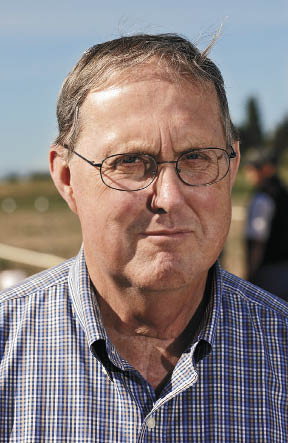 Growers delivering beets to the Amalgamated Sugar Company LLC have, for the past two years, delivered beets that are high in quality, either high in sugar or low in nitrates or both. By delivering quality beets the grower's factories have been able to operate with greater efficiency which translates into higher returns to the growers.
Growers delivering beets to the Amalgamated Sugar Company LLC have, for the past two years, delivered beets that are high in quality, either high in sugar or low in nitrates or both. By delivering quality beets the grower's factories have been able to operate with greater efficiency which translates into higher returns to the growers.
One needs to review what went into the making of high quality beets. First and foremost is the grower's commitment to their cooperative. For example, when offered a soil test program there was a universal acceptance of the program. By testing the soil to the three-foot level growers gained the knowledge of how much nitrogen was available to the plant. With this information fertilizer requirements to achieve high yields and high content with low nitrates and conductivity could be determined and then applied. Growers also took into account that sugarbeet varieties are more nitrogen efficient than previous and therefore require less nitrogen.
Another part of producing a quality crop can be described by the term "best management practices." Not all practices work for each farm. Each grower with the use of past records and the use of current information and the knowledge gained by experience can determine those practices which produce the best results. In some cases applying the right nitrogen may not give the intended results because of other factors. It may be necessary to change irrigation practices, such as irrigating both rows, which will allow the plant to use the nitrogen more efficiently. Sandy soils may require the split application of nitrogen where heavier soils may require one application early in the season. Some growers have started to use zone fertilizer applications recognizing that each field varies across the field. Producing a quality crop is the result of recognizing those practices which work best to produce the desired results.
Records kept over the years have shown that higher stand counts have a greater potential to produce a higher yielding beet crop with lower impurities. The adage "you can't harvest something that is not planted and growing" is valid. Since 2008 here in the Northwest growing area we have experienced cold wet springs. Until this year, stand counts, as calculated by the tare lab, were 118 to 130 beets per 100 feet. Because the industry was using Roundup Ready varieties, there was an expectation of a yield bump. However, yields were about the same as in previous years or even less. Cool springs contributed in the reduction of yields, but in 2011 growers concentrated in achieving higher stand counts. More seed was planted resulting in an average stand count for Amalgamated Growers of 146 beets per 100 feet. Even with a cool wet spring, a record-setting yield of 34.67 ton per acre was set. It should be noted that good yields and quality beets are possible when using the best growing practices possible. Growers proved it in 2011.
Recognition of support groups is necessary at this point. Amalgamated Crop Consultants put extra effort into advising and assisting the growers in identifying those growing practices which will yield the best beet crop. Soil testing programs work but it takes a lot of coordination between the grower and those who take the samples and do the testing. This was accomplished by the consultant and was done successfully. Crop consultants can provide records of past performance and how growing practices have affected production. Another part of the team that goes unnoticed is the Amalgamated Sugar Company Ag research group. These people operate the variety test trials that provide information about the potential of available varieties. The research agronomists also run trials in nitrogen management, stand establishment, and other agronomic practices. Information and results from these trials are passed onto the crop consultants to be communicated to the growers.
Over the years those who work for the University of Idaho, Oregon State University and the USDA ARS have been essential to growers. When the industry was faced with the problem of rhizomania it was these professionals who stepped up to the plate to provide answers the industry needed. With the advent of Roundup Ready technology it was the universities who did the work so that the growers could adopt and maximize the technology's potential. It is hard to imagine how this cooperative would fare without their vital research.
Coming full circle to the question of what makes an exceptional crop, we can answer by pointing to the efforts of growers, consultants, researchers and many others who work to make sugarbeet farming a success. n